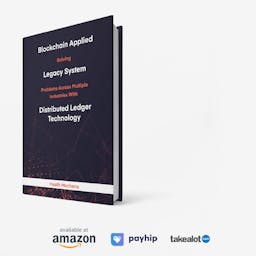
What is Token Economics?
Token economics or token engineering involves studying economic models and token distributions of projects in the cryptocurrency market. Economic theories that are used within blockchain-enabled applications are generally referred to as cryptoeconomics.
Popular Definitions of Cryptoeconomics
According to the University of Berkeley, the study of the incentives that secure blockchain systems is what is known as cryptoeconomics. Cryptoeconomics take into account the cost of verification and the cost of networking according to the MIT Cryptoeconomics Lab.
According to co-founder of Ethereum, Vitalik Buterin, cryptoeconomics involves ‘building systems that have certain desired properties; using cryptography to prove properties about messages that happened in the past; and using economic incentives defined inside the system to encourage desired properties to hold into the future’. A lead Ethereum developer Vlad Zamfir defined cryptoeconomics as a practical science that focuses on the design and characterization of protocols that govern the production, distribution, and consumption of goods and services in a decentralized digital economy.’
Token Economy Considerations
Blockchain technology is important for powering token-based ecosystems since it makes it possible for platform owners to commit to predetermined rules of token supply.
Tokens make it possible for users to transact with each other and access a pool of dispersed participants for their effort and resources in order to improve platform productivity. Since the participants are able to sell tokens to users, the amount of resources a platform can raise through token payment depends on the users’ valuation of tokens. By shifting ownership and control of a platform from initial equity holders to users through tokenization, users can be better protected.
In a continuous-time economy, there are three types of agents – platform owners, contributors, and a unit measure of users. The owners generally design the platform’s protocol. Contributors then devote efforts and resources that are required for the operation and continuing development of the platform. Users are the ones who then conduct peer-to-peer transactions and realize trade surpluses on the platform. A generic consumption good typically serves as the numeraire – this could be in the form of the platform’s native token.
Token distribution can sometimes come at the expense of limiting the powers of any creators/owners who would typically subsidize user participation to maximize the platform’s network effect. The success of online platforms depends heavily on network effects that is why traditional platforms typically allocate substantial resources to subsidize user participation in order that they are able to acquire a large user base.
For any crypto asset to have value, incentives are necessary for creating token ownership demand which consequently creates demand for the particular crypto asset and may lead to price appreciation.
The dynamics of token price is directly linked to that of token supply. Optimal token demand and supply, as well as token market clearing mechanisms are important considerations when creating a token economic model. To have an effective dynamic token allocation strategy, the key is to understand the implications of the approach on user base dynamics, endogenous platform growth, and the dynamics of token price.
Ultimately, incentives are at the core of devising a token economic model that is sustainable. Read our complete guide on the different types of tokens issued on the blockchain.
Different types of of token economic models
Asset-backed Model – in this type of model, an issuer typically pegs the value of an asset to the token’s underlying assets. This is comparable to the asset-backed security model popular in traditional finance. Asset-backed tokens can rely on the backing of other assets such as gold or USD. Stablecoins issued on the blockchain tend to utilize this model e.g. USDT, USDC, or PAXG.
Deflationary Model – this type of model is popular with crypto assets that have a currency element such as BCH, or LTC. A deflationary model effectively means that a hard cap on the token creation is set in stone. Crypto assets like Bitcoin (BTC) have a maximum supply which functions as a deflationary mechanism since demand tends to increase over time while the supply remains fixed.
Inflationary Model – common with crypto assets created to serve as utility tokens as is the case with Ethereum (ETH), Polkadot (DOT) and Solana (SOL). With this type of model, there is no hard cap on the token creation, however, token creation can be set according to specific token creation schedules. Some projects also determine supply depending on the demand.
Dual-token Model – this type of model means that two different tokens are issued on a single blockchain. Typically, one token may have a store of value use case and the other can be a utility token. This model is generally employed to incentivize users to hold one token in order to receive yield or returns in another token. Examples of projects that have this type of model are ONT & ONG, VET & VTHO, or NEO & GAS.







